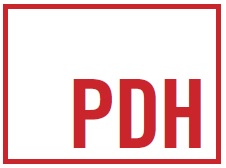Home » Events
Events
Refine your results by
Sponsored Webinar
Put The Data To Work: Leverage 3D Modeling Tools to Maximize the Value of Your Subsurface Data
Sponsored Webinar InEight & ENR Webinar Series
Lessons in Innovation from Kiewit’s Work on South Fork Wind
Industry
10/25/24
Venue name/address: Baltimore Marriott Inner Harbor at Camden Yards
110 South Eutaw Street
Baltimore, MD
United States
Contact: Stephanie Herndon
ENR Mid-Atlantic Regional Best Projects Awards
Industry
10/29/24
Marriott Downtown Orlando
400 West Livingston St.
Orlando, FL
United States
Contact: Stephanie Herndon
ENR Southeast Regional Best Projects Awards
Industry
11/7/24
Renaissance Phoenix Downtown Hotel
100 N 1st St.
Phoenix, AZ
United States
Contact: Stephanie Herndon
ENR Southwest Regional Best Projects Awards
Industry
11/12/24
The Edison Ballroom
240 W. 47th Street
New York, NY
United States
Contact: Stephanie Herndon
ENR New York Regional Best Projects Awards
Industry
11/15/24
The Blackstone Hotel
636 South Michigan Avenue
Chicago, IL
United States
Contact: Stephanie Herndon
ENR Midwest Regional Best Projects Awards
Industry
11/22/24
Hyatt Regency Boston
One Avenue De Lafayette
Boston, MA
United States
Contact: Stephanie Herndon
ENR New England Regional Best Projects Awards
The latest news and information
#1 Source for Construction News, Data, Rankings, Analysis, and Commentary
JOIN ENR UNLIMITEDCopyright ©2024. All Rights Reserved BNP Media.
Design, CMS, Hosting & Web Development :: ePublishing



.png)

 The ENR Regional Best Projects Awards is a series of events that recognize and honor groundbreaking design and construction teams across the United States. The winners are selected by independent juries of industry leaders from each of ENR's 10 regional editions. ENR Mid-Atlantic will celebrate the region's winners at a Baltimore awards ceremony this October.
The ENR Regional Best Projects Awards is a series of events that recognize and honor groundbreaking design and construction teams across the United States. The winners are selected by independent juries of industry leaders from each of ENR's 10 regional editions. ENR Mid-Atlantic will celebrate the region's winners at a Baltimore awards ceremony this October. The ENR Regional Best Projects Awards is a series of events that recognize and honor groundbreaking design and construction teams across the United States. The winners are selected by independent juries of industry leaders from each of ENR's 10 regional editions. ENR Southeast will celebrate the region's winners at an Orlando awards ceremony this October.
The ENR Regional Best Projects Awards is a series of events that recognize and honor groundbreaking design and construction teams across the United States. The winners are selected by independent juries of industry leaders from each of ENR's 10 regional editions. ENR Southeast will celebrate the region's winners at an Orlando awards ceremony this October. The ENR Regional Best Projects Awards is a series of events that recognize and honor groundbreaking design and construction teams across the United States. The winners are selected by independent juries of industry leaders from each of ENR's 10 regional editions. ENR Southwest will celebrate the region's winners at a Phoenix awards ceremony this November.
The ENR Regional Best Projects Awards is a series of events that recognize and honor groundbreaking design and construction teams across the United States. The winners are selected by independent juries of industry leaders from each of ENR's 10 regional editions. ENR Southwest will celebrate the region's winners at a Phoenix awards ceremony this November. The ENR Regional Best Projects Awards is a series of events that recognize and honor groundbreaking design and construction teams across the United States. The winners are selected by independent juries of industry leaders from each of ENR's 10 regional editions. ENR New York will celebrate the region's winners at an awards ceremony this November.
The ENR Regional Best Projects Awards is a series of events that recognize and honor groundbreaking design and construction teams across the United States. The winners are selected by independent juries of industry leaders from each of ENR's 10 regional editions. ENR New York will celebrate the region's winners at an awards ceremony this November. The ENR Regional Best Projects Awards is a series of events that recognize and honor groundbreaking design and construction teams across the United States. The winners are selected by independent juries of industry leaders from each of ENR's 10 regional editions. ENR Midwest will celebrate the region's winners at a Chicago awards ceremony this November.
The ENR Regional Best Projects Awards is a series of events that recognize and honor groundbreaking design and construction teams across the United States. The winners are selected by independent juries of industry leaders from each of ENR's 10 regional editions. ENR Midwest will celebrate the region's winners at a Chicago awards ceremony this November. The ENR Regional Best Projects Awards is a series of events that recognize and honor groundbreaking design and construction teams across the United States. The winners are selected by independent juries of industry leaders from each of ENR's 10 regional editions. ENR New England will celebrate the region's winners at a Boston awards ceremony this November.
The ENR Regional Best Projects Awards is a series of events that recognize and honor groundbreaking design and construction teams across the United States. The winners are selected by independent juries of industry leaders from each of ENR's 10 regional editions. ENR New England will celebrate the region's winners at a Boston awards ceremony this November.